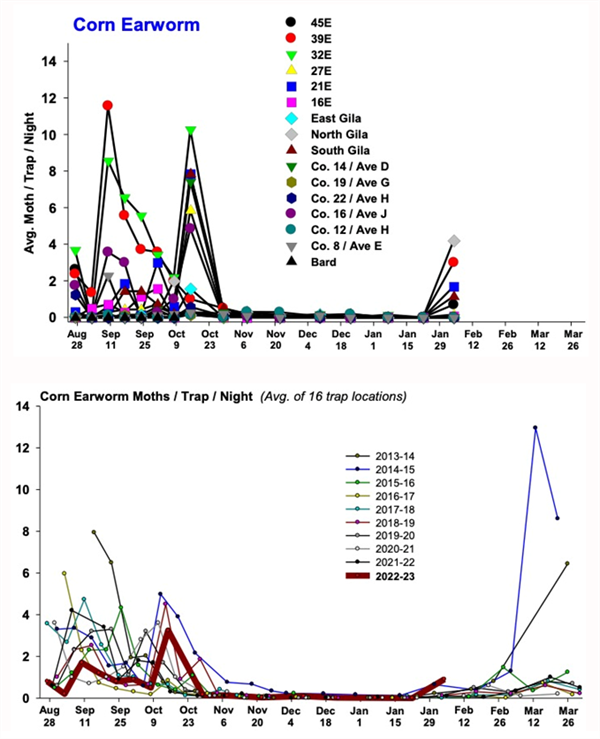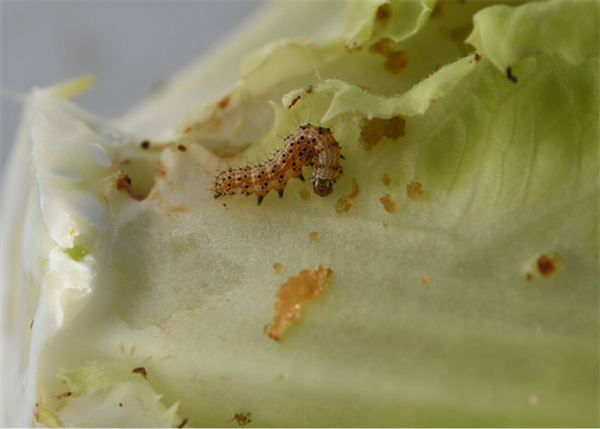Insect activity over the past week has started to pick up. We have seen a significant increase in green peach aphid pressure here at the Yuma Ag Center. Similarly, most PCAs I’ve visited with have noted similar increases in aphid activity and are keeping them under control. Although worm pressure has been light in the field for the past month or so, it would be wise to keep a keen eye out for corn earworm (CEW). In the past, high CEW abundance has occurred on late head lettuce (March), particularly in the Dome/Wellton areas. Surprisingly, our most recent trap catches showed significant moth flights in Roll, Dome Valley, and north Gila Valley following several weeks of inactivity (see graphs below). This is typical for February and could be the calm before the storm. The last time we saw CEW moth activity this early (2015), we had reports of high numbers of CEW larvae in the field at harvest. These most recent trap counts should be used as an early indicator that moths are actively flying at night at higher abundance and PCAs should start to scout more aggressively for eggs and larvae. You should be especially wary of CEW given the higher nighttime temperatures forecasted for the next 2 weeks.
CEW can be very damaging in spring crops once head formation begins; larvae will usually bore into the head 1-2 days upon hatching. Corn earworm is much more likely to bore into lettuce heads or romaine hearts than other Lepidoptera larvae, rendering the heads/hearts unmarketable. If fields are not watched closely, infestations may not be noticed until harvest. Once inside the head/heart, control of larvae with currently available insecticides is not possible. Thus, pay careful attention for newly oviposited eggs (laid singly) on lettuce plants, particularly close to the base of the head. If you are beginning to find eggs and suspect that CEW are active in the field when plants are beginning to head, it would be a good idea to treat at regular spray intervals (~ 7 days). The UA nominal threshold for CEW in head lettuce from early heading to harvest is 1-2 larvae / 100 plants. Essentially, you find one larva, you spray. Repeated insecticide treatments may be required to maintain low population levels near harvest. Most contact insecticides recommended for Lepidopterous larvae are active against CEW. Furthermore, the addition of a pyrethroid with thrips, aphid and/or fungicide sprays may be cheap insurance against CEW larvae beginning to emerge as you approach harvest. For more information on CEW management and control recommendations see Corn Earworm Management on Desert Produce and the 2023 Lep Control Chart.







